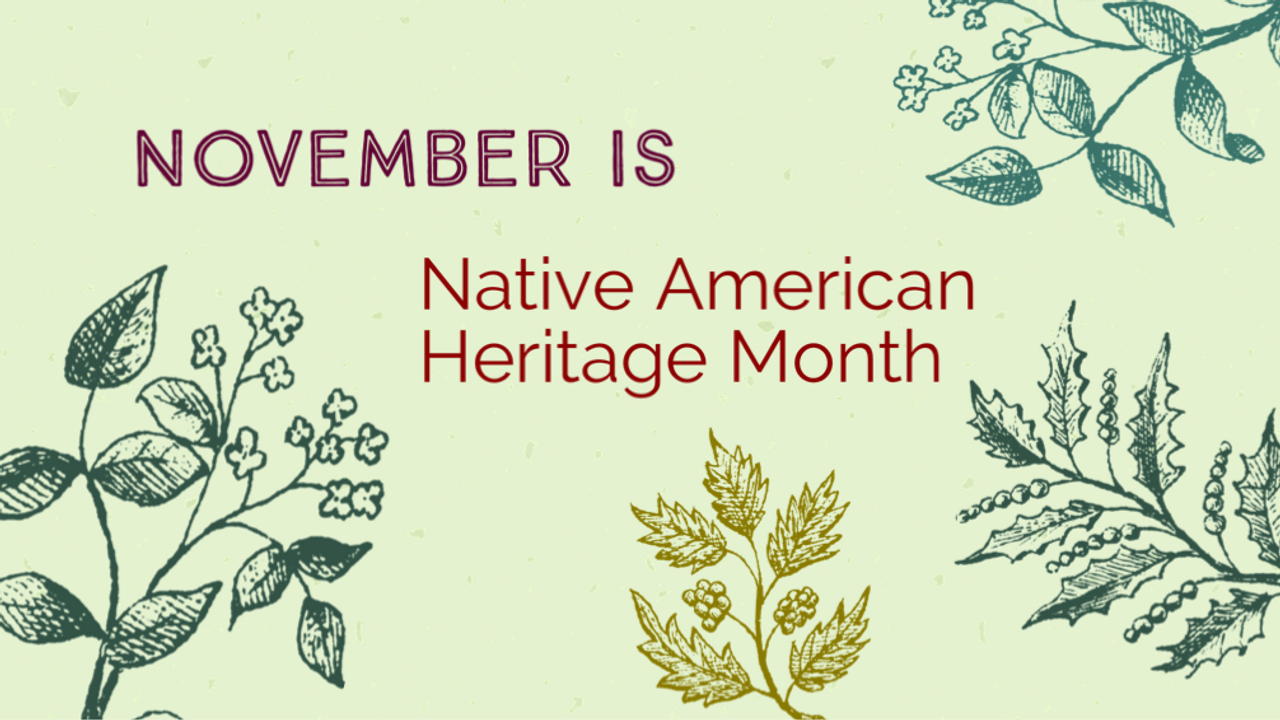Celebrating Native American Heritage Month 2021
Nov 02, 2021
How have you honored and celebrated National Native American Heritage Month?
What is Native American Heritage Month?
A nationally recognized celebration of the histories, cultures, and contributions of the indigenous peoples of the United States. Some of the first proponents of an “American Indian Day” were Dr. Arthur C. Parker of the Seneca Tribe, director of the Museum of Arts and Science in Rochester; Rev. Sherman Coolidge of the Arapaho Tribe, the President of the Congress of the American Indian Association; and Red Fox James of the Blackfoot Tribe, who organized the first American Indian Boy Scout Troop and was a notable supporter of women's suffrage. Their advocacy resulted in several state-level celebrations, including in New York, whose governor established the country’s first ever “American Indian Day” on the second Saturday in May, 1916. Nearly a century later in 1990, President George H.W. Bush standardized these state-level celebrations in a joint resolution designating November “National American Indian Heritage Month.”
What about where we live?
In the United States there are over 5 million Native Americans (1.7% of the total population), about 80% of whom live outside of reservations. Contemporary Native Americans belong or trace their ancestry to over 574 tribes within the United States, each with their own traditions, language, culture, and history. CBWS is built on the tribal lands of the Munsee, one of the three sub-tribes of the Lenape people, whose territory spans present-day Delaware, New Jersey, and eastern Pennsylvania as well as New York City, western Long Island and the Lower Hudson Valley. The Tribe’s full name, Leni Lenape, roughly translates as “original person” - a fitting reminder to us that they are, in fact, the original New Yorkers. Native language and history are reflected in many New York institutions: the island of Manahatta became Manhattan, and the central Lenape trade route Wickquasgeck, translated to the Dutch Brede weg, was later anglicized as “Broadway.”
There is a popular myth that the Dutch purchased Manahatta island from the Lenape in 1626, the truth is likely different. Historians suggest that Dutch governor Peter Minuit did, in fact, trade a collection of goods valuing approximately 60 guilders (dutch currency - with an estimated value of $400 - $1000 in today’s currency). Land ownership was a fundamentally European conception; for Native Americans, air, water and land could not be traded. While we can’t really know what the Lenape people of the time thought of this agreement, we do know that it was enforced by the eventual building of a wall around “New Amsterdam” and the forced expulsion of their tribe, beginning the Lenape diaspora. This sad history reflects a broader pattern of aggressive colonial expansion and forced expulsion of Native Americans, later written into law with the passage of the Indian Removal Act of 1830 under President Andrew Jackson. Despite this, the Lenape continue to live in New York today and to find community in places such as the Lenape Center of Manhattan, which advocates for living land acknowledgements, the homecoming of the Lenape people, and their continuance through community, culture, and the arts.
To all those who identify as Native American, American Indian, Alaskan native, or indigenous in our community, thank you for your contributions here at CBWS! We also gratefully acknowledge the ways in which the contributions of Native communities are woven throughout the fabric of our society. We hope the entire community will take this month to learn more about indigenous cultures and people, and we have attached some resources for you to use as a starting point. Celebrating and honoring cultures is part of the life-long learning that we encourage as a core tenet of CBWS. If you have other suggestions for how we can celebrate Native American Heritage Month - and other cultures in our community in the future - please contact Bianca to share your ideas.
Resources for exploring Native American Heritage:
Read more about the efforts of present-day Munsee Lenape people to restore Native history to NYC in this Smithsonian Magazine article and at the Lenape Center
This is a wonderful interview to read https://urbanomnibus.net/2020/02/home-in-lenapehoking/
Explore the National Archives of Native American Heritage Month
Check out PBS Celebrates Native American Heritage Month
Read more about the practice of Native American Land acknowledgement
Learn more about the ecology of NYC prior to European settlement at the Welikia project
View the American Indian Film Gallery
Resources for Teachers at the University of Minnesota
Visit the National Museum of the American Indian - virtually or in person at Battery Park!
The New York Public Library has recommended reading for all ages
Check out StoryCorps’ Tribal Libraries project
Howard University Law School’s timeline of Indigenous People’s Civil Rights
*Special thanks to The Brooklyn Latin School’s history department for this information.


